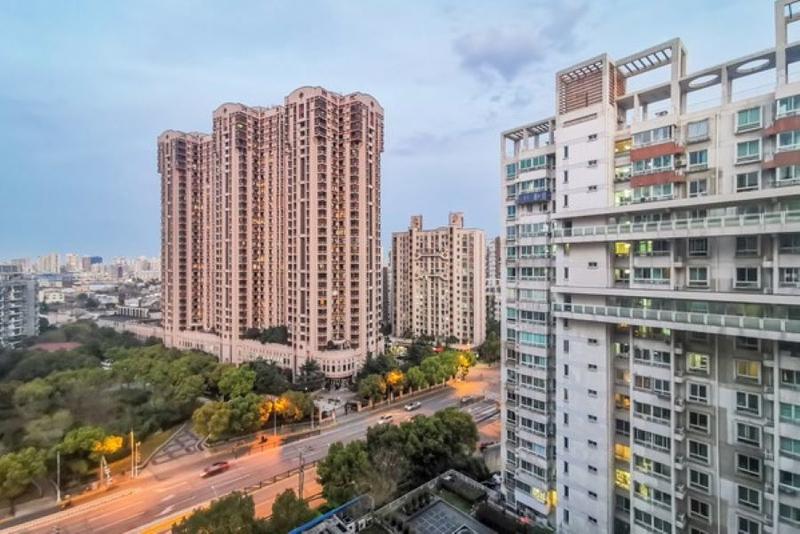 Residential buildings in Yangpu district in Shanghai, on March 23, 2020. (PHOTO / SIPA)
Residential buildings in Yangpu district in Shanghai, on March 23, 2020. (PHOTO / SIPA)
Despite certain challenges spawned by COVID-19, Shanghai's home market set a number of records last year, industry insiders said.
Transactions for both new homes and pre-owned homes hit a four-year high-proof that Shanghai remains highly attractive to homebuyers, said experts.
According to data from Shanghai-based E-house China Research and Development Institution, new home transactions in Shanghai surged more than 23 percent year-on-year in terms of volume to 9.18 million square meters last year.
In the pre-owned homes segment, deals jumped 27 percent to about 302,000 units.
In value terms, more than 500 billion yuan (US$77.2 billion) worth of new homes were traded last year, up 24 percent over 2019.
Deals for pre-owned apartments surged 30 percent in value terms to more than 1 trillion yuan, according to Ding Zuyu, CEO of E-House (China) Enterprise Holdings Ltd.
The fact that the volume of transactions for existing homes exceeds that of new ones is a sign of the maturity of Shanghai's home market. This trend will likely continue, real estate experts said.
"It's only a matter of time before major Chinese cities that have completed hoenter this phase," said Hui Jianqiang, head of research with Beijing Zhongfang-Yanxie Technology Service Ltd.
"More mature (real estate) markets like Shanghai and Beijing have been changing into markets dominated by transactions for pre-owned homes for over a decade now," said James Macdonald, head and senior director of Savills China Research.
ALSO READ: Chinese property firms bank on virtual reality amid epidemic
Experts said larger and developed cities and those constrained by a shortage of land for new homes will lead the growth of transactions for existing homes.
This is the main reason for the buildup in existing stock, a reduction in the relative scale of the new homes market and, in the case of Shanghai, the absolute scale of new supply over the past five years, Macdonald said.
Studies indicated there are numerous opportunities to review existing stock and look at the possibility of retrofitting or repurposing sites to better and higher usage, he said.
"There were about 1.7 billion square meters of new residential space taded annually, but this figure is unlikely to grow forever. On the contrary, a small fraction of the millions of square meters of living space would create tremendous room for restructuring, upgrade and renovation," said Chen Sheng, president of the China Real Estate Data Academy.
Regeneration of existing homes also creates the advantage of reducing the number of dilapidated areas, creating a new opportunity for more proactive asset management to keep developments up-to-date, and in good running order throughout the building's life cycle and improving energy efficiency and comfort in these buildings, Macdonald said.
"When considering the overall residential property market in China, we expect the residential policy will remain that 'housing is for living in, not for speculation'," said Shaun Brodie, senior director and head of business development services with Cushman & Wakefield East China.
READ MORE: Shenzhen commercial property market bounces back in Q4
"Therefore, we expect related policies to continue to promote the sustainable development of the residential property market in the city, and for residential properties, be they new or regenerated housing, to elevate the well-being of residents in Shanghai."


